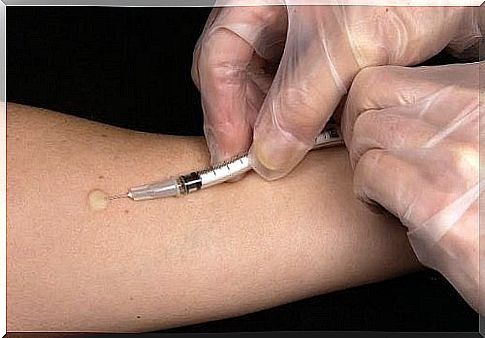Guillain-Barré Syndrome: All You Need To Know

Along with the spread of the Zika virus in South America, cases of Guillain-Barré syndrome have been reported . It is a neurological pathology, the characteristics of which we will explain below to all mothers who decide to read this important article.
As might be expected, the emergence of these diseases has raised the concern of pregnant women living in affected countries. This is because some scientific research has indicated that Zika may be linked to some other pathologies. In particular, the Guillain-Barré syndrome and the microcephaly of newborns.
These “consistent results”, as the World Health Organization (WHO) states, were enough to declare a global health alert. And to ask women of reproductive age not to plan pregnancies. This especially in the countries with the highest incidence of these diseases, such as Brazil, Colombia, El Salvador, French Polynesia, Suriname and Venezuela.
While the Zika virus leads to mild or moderate symptoms, Guillain-Barré syndrome attacks the body more severely, causing paralysis of the nervous and respiratory systems. So the consequences can be fatal if not diagnosed early and treated in time.
In the countries affected by Zika and Guillain-Barré, the WHO has asked women to postpone any idea of pregnancy.
What is Guillain-Barré syndrome?
Guillain-Barré syndrome is an autoimmune disease that heavily affects the peripheral nervous system and develops from infectious pathologies. Therefore it is believed to be linked to the Zika virus.
Experts explain that when a patient goes through an infectious picture sustained by a bacterium or virus, then his immune system is activated to attack the attacker. But if Guillain-Barré syndrome develops, the immune system undergoes changes that cause it to attack the nervous system.
In particular, it attacks the myelin that covers the nerves, considering it to be part of the ongoing infection.
When the nerves are discovered, due to the destruction of the myelin layer, the transmission of information between the brain and the muscles is greatly impeded. This is how paralysis sets in.
Symptoms of Guillain-Barré syndrome
Some symptoms of this disease can manifest themselves with the following picture:
- Due to interference in communication between the brain and the peripheral nervous system, the patient begins to lose the ability to feel heat, cold, pain and any other sensation from the periphery of the body.
- When muscles stop reacting to brain stimuli, progressive weakness is generated which tends to vary in intensity depending on the patient. There are people who can suffer from paralysis in less than 48 hours, while others take longer.
- Weakness and therefore paralysis start from the feet, go up to the legs and continue to go up the body, until it affects the respiratory system. In these cases, the risk of death from respiratory arrest increases.
- The main symptoms of Guillain-Barré syndrome are weakness and progressive paralysis.

Treatment and recovery
Treatment for Guillain-Barré syndrome tries to reduce the activity of the immune system. This occurs through plasmapheresis, which consists in filtering the blood in order to eliminate antibodies that attack the myelin layer of the nerves. Injection of immunoglobulins was also found to be effective in strengthening a healthy immune system.
Experts report that 80% of patients with Guillain-Barré can make a full recovery. While 10% can have a series of consequences that can make them incapacitated for about eight or ten months; so that to overcome these limitations it is necessary to resort to rehabilitation therapies.
Relationship between Zika virus and Guillain-Barré syndrome

The hypothesis that the Zika virus is linked to Guillain-Barré syndrome met with success after a group of researchers from the Pasteur Institute in Paris conducted analyzes on 42 patients who had contracted the Zika virus in French Polynesia about two years earlier.
The researchers found that patients had neurological symptoms of Guillain-Barré about six days after contracting Zika. Experts have concluded that one in 4,000 people with Zika can develop Guillain-Barré.
This consideration contrasts with the increase in cases of this syndrome in El Salvador and Brazil; in these countries it has not yet been possible to determine with certainty the link between the two diseases. This is because not all people affected by Zika receive medical treatment. And this makes it difficult for the authorities to generate realistic statistics.
Although El Salvador and Brazil are the countries where more cases of Guillain-Barré have been detected, it has been difficult to establish a direct link with the Zika virus.
Research is still in early stages in order to reach definitive conclusions. No vaccine has yet been found for this powerful virus. Faced with the possibility that the carrier that transmits the Guillain-Barré is the Aedes Aedgypti, the same as the Zika, the health authorities have taken action. They insist on the importance for the population to apply all necessary means to prevent the bites of these insects.
Until the medical and scientific community finds a vaccine, what needs to be done to reduce the effects of these diseases falls on all citizens. This is why it is essential to get informed and act with prevention. In order not to be part of these alarming statistics.









